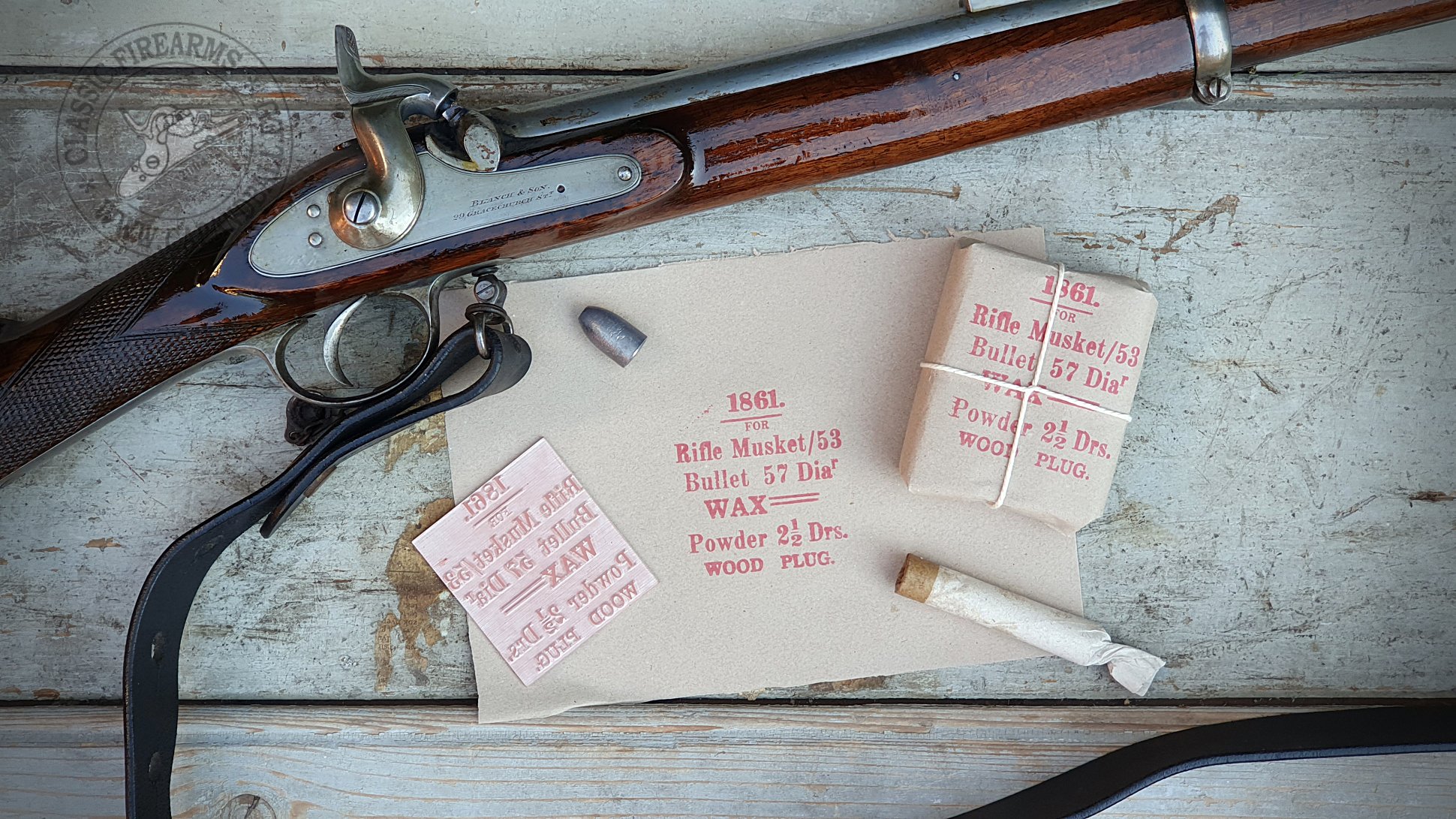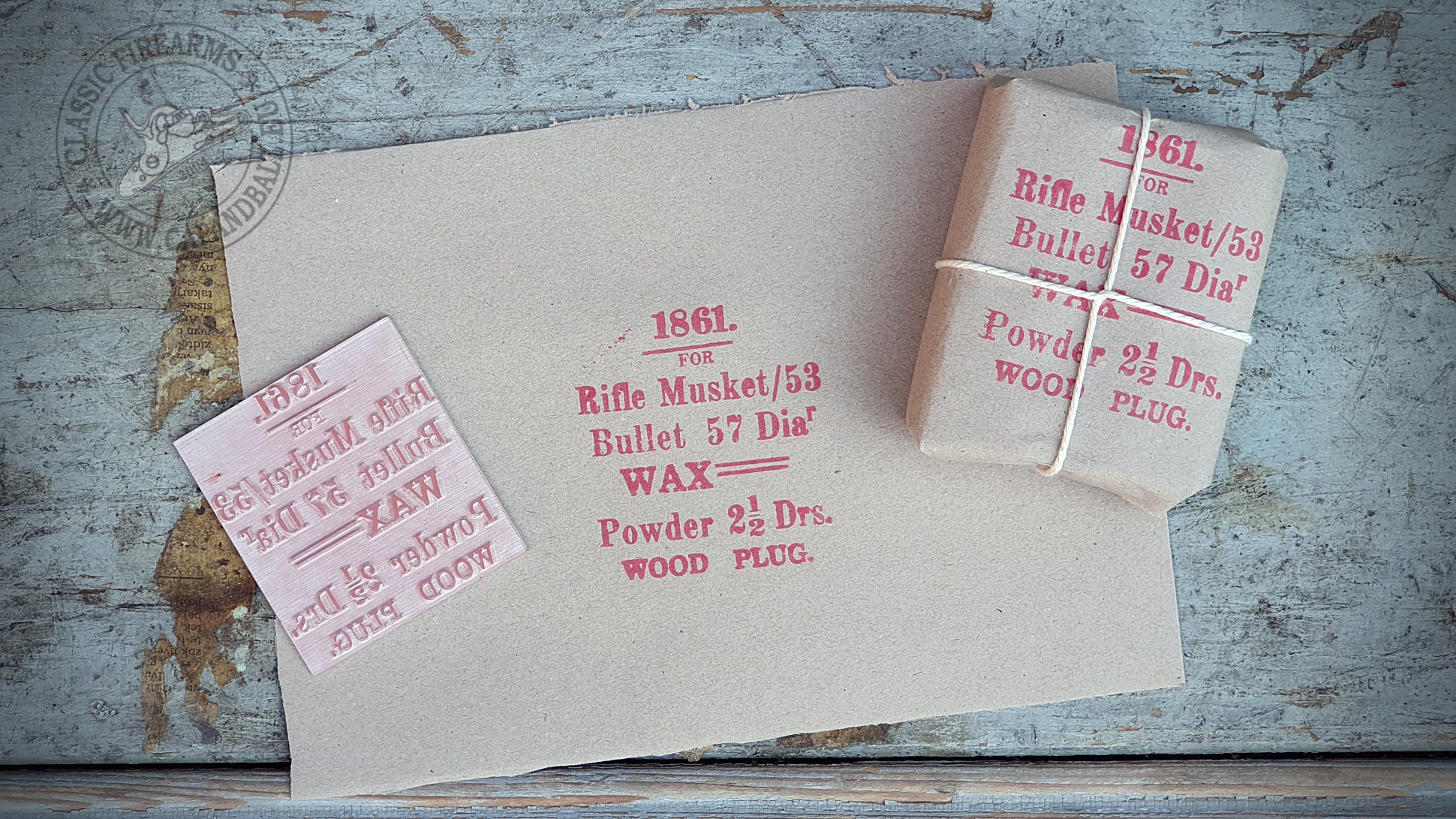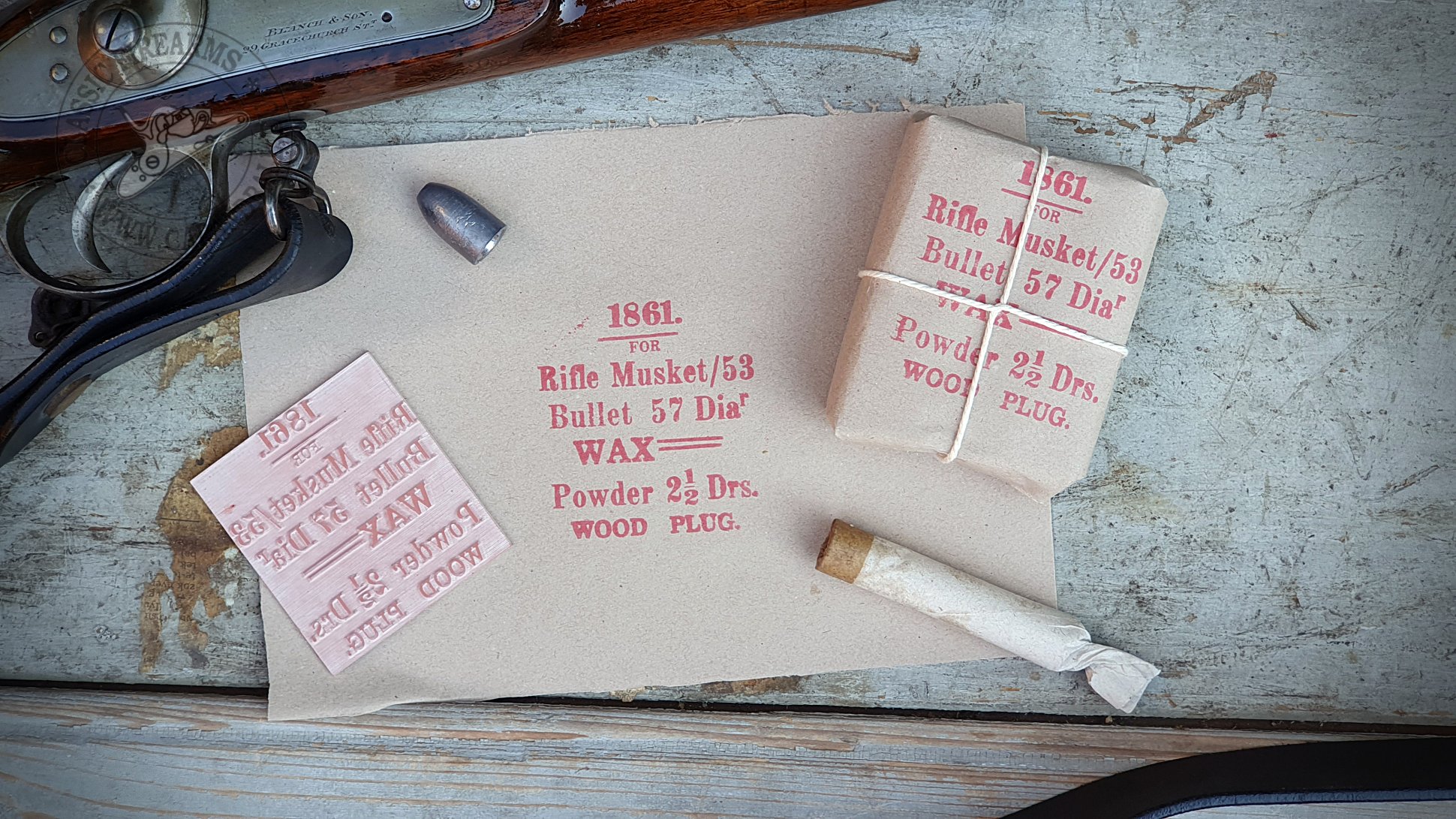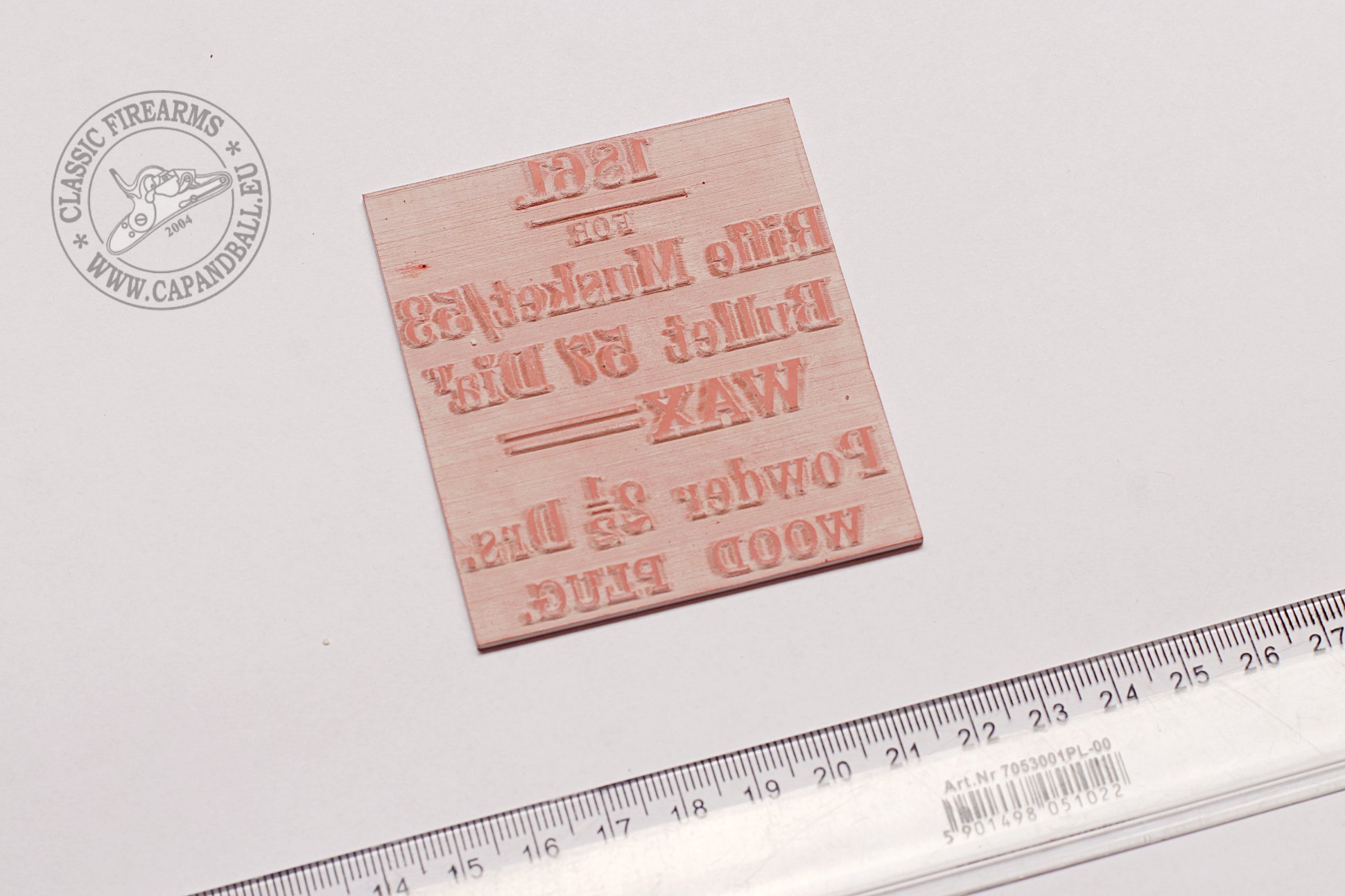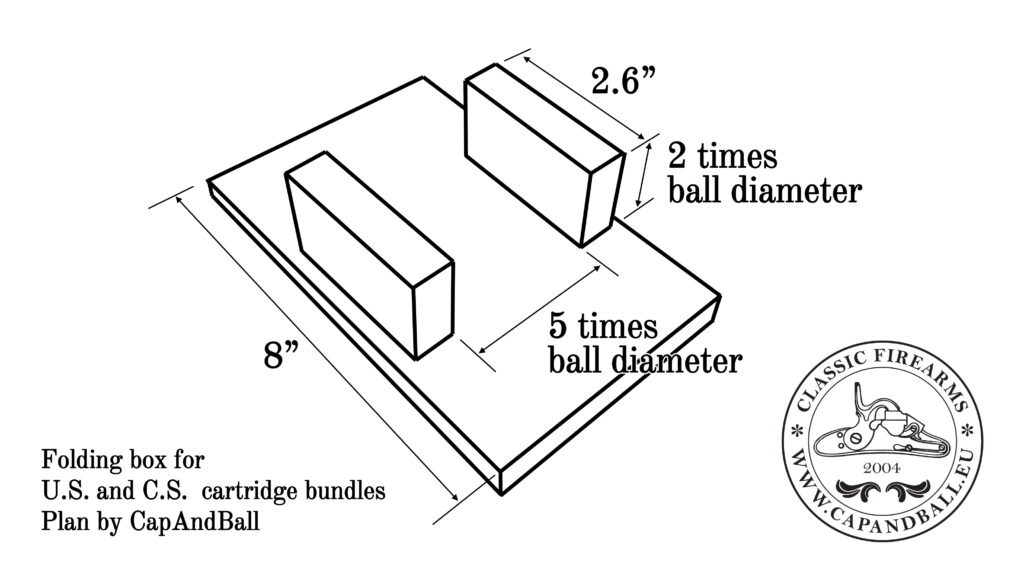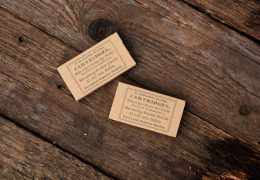Eley Brothers was a British manufactory for cartridges founded by Charles and Willian Eley in London, 1820. The company’s first successful product was the wire cartridge, that’s patent was purchased by the brothers in 1828. They added percussion caps to their portfolio in 1837. The company teamed up with Colt for patenting skin cartridges, and in the early 1860 they made improvement to the pinfire cartridges. During the Civil War they shipped huge quantity of military supplies to the Confederacy through blockade runners, including cartridges for Austrian rifle muskets, Enfield type rifle-musket cartridges, small bore long range rifle cartridges, double waterproof percussion caps and buck and ball cartridges. These bundles held 10 Enfield cartridges loaded with the .57 Pritchett ball with a length of approximately 2.74-3.25”. Please note that the British made Enfield cartridges were longer than what could fit in the tins of a standard American cartridge box, so large quantities of imported cartridges were reshaped to be shorter.
Please note that you are solely purchasing the rubber plate, no other accessories are shipped in the package, except for this manual of instructions.
Instructions on making bundles
Tools you will need: scissors, white string, off-white craft paper, folding box, .54 cal wooden dowel for making cartridges, ink stamp pad, stamping ink
- Cut the paper sheets.
| Wrapper size | Bundle size | ||||
| Length (inch) | Width (inch) | Length (inch) | Width (inch) | Depth (inch) | |
| .69 Musket Minié | 10 | 8 | 2,5 | 3,4 | 1,45 |
| . 58 Musket and rifle Minié | 9 | 6,5 | 2,6 | 2,9 | 1,15 |
| .69 Round ball | 9 | 6,5 | 2,6 | 3,1 | 1,35 |
| .69 Buck n’ ball | 9 | 6,5 | 3,1 | 3,1 | 1,35 |
| .54 Sharps | 10 | 6,8 | 2,6 | 2,5 | 1,1 |
Theoretically the expanding ball .69 cal musket and .58 cal rifle and rifle musket cartridges had ordinary colour wrappers, the .58 cal cadet rifle shooting a lighter recoil cartridge with decreased powder charge and bullet wait had red colour wrapper, the .69 cal ball cartridges wrappers were supposed to be of green colour, while the buckshot cartridge wrappers were supposed to be red again. In practice these colour codes were seldom used during the conflict, therefore the labels and images of the wrappers were the key information source in differentiating the various cartridge bundles.
- Make the folding box by nailing two strips of wood to a 10×8” wooden plank. The length of the wooden strip is 2.6”, the distance between them is 5 times the diameter of the ball, their height is two times the diameter of the ball.
- Attach the rubber stamp to an appropriate size of wood with surface sanded smooth. Use double sided tape to attach the stamp.
- Apply ink to the stamp using the ink pad saturated with the desired colour (black or red) ink. Be sure that the complete surface is covered. Place the paper sheet on a semi hard surface (like 10 sheets of paper), and gently press the stamp on the paper. Experiment with different inks, pressure and paper quality to get the best result.
- Place the wrapper paper in the centre of the folding box, with the short sides towards the two sides of the box.
- Please 10 cartridges parallel with the sides of the box on the wrapper in two tiers with balls alternating.
- Roll a cartridge trapezoid on the .54 cal wooden former, choke and tie on one end, add 12 or 13 (late C.S.) percussion caps, and fold the tail. Insert the cap’s package in the opening of the cartridge bundle.
- Bring the two short sides of the paper together, and fold the sides like you were wrapping a gift box. Do not make perfect edges, but the bundle has to be stiff.
- Tie the bundle, first in the direction of the length, then its breadth, with the twine fastened in a single bow-knot.
- Enjoy your excellent cartridge bundle creating according to the original method using a Capandball Arsenal label stamp.

